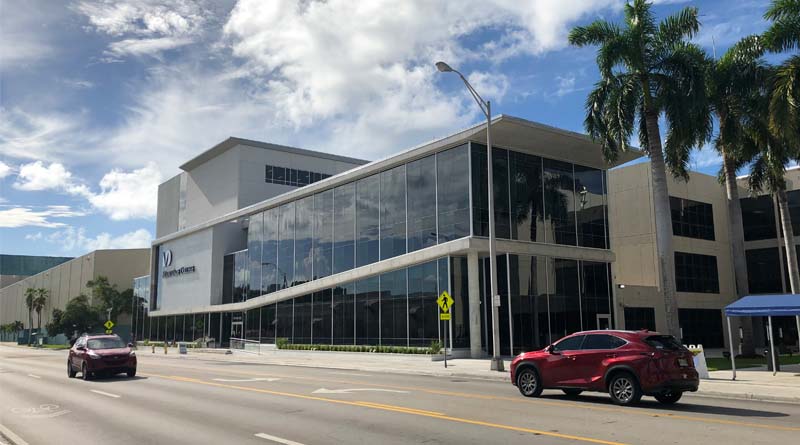By SCN Staff
MIAMI—Miami Dade College (MDC) recently unveiled its new Center for Learning, Innovation and Simulation during a ribbon-cutting ceremony. Scheduled to welcome its first students this fall, the technology-rich facility will ensure students are well-prepared to succeed in the rapidly changing health care industry, enable MDC to expand its health sciences offerings, and open the door to new partnerships with Miami-area health care providers.
Located on the MDC Medical Campus in the heart of Miami’s Health District, the new five-story, 135,000-square-foot facility will accommodate the continued growth of some of the college’s most in-demand programs – including emergency medical services, nuclear medicine technology, nursing and physician assistant – and allow for the addition of new programs such as central sterile processing and surgical technology.
Harvard Jolly was the architect of record. Kahler Slater was the design and health sciences education architect, providing programming, planning and design expertise.
An advanced medical simulation center occupies the building’s entire third floor, enabling students to gain essential hands-on experience working in a variety of clinical environments, including emergency, surgery, labor and delivery, primary care and home health care. It features 15 hospital/patient rooms with high-fidelity mannequins, a simulated ambulance, a simulated one-bedroom apartment, 10 exam rooms where students will interact with actors specially trained to portray patients, a 5-sided CAVE virtual reality space, debrief rooms where students and faculty gather to review just-completed exercises, and a partner/sponsor space.
In addition to the simulation center, the Center for Learning, Innovation and Simulation includes a variety of classroom, collaboration and gathering spaces. Among them are active learning classrooms; a 300-person multi-purpose conference center; a 150-person tiered lecture facility with technology at each seat; smaller lecture classrooms; wet labs; physical therapy, occupational therapy and physician assistant labs; a radiology suite and student break-out spaces.
While the Center will primarily be used by MBC students and faculty, it will also be available to local health care organizations for staff training and research.


